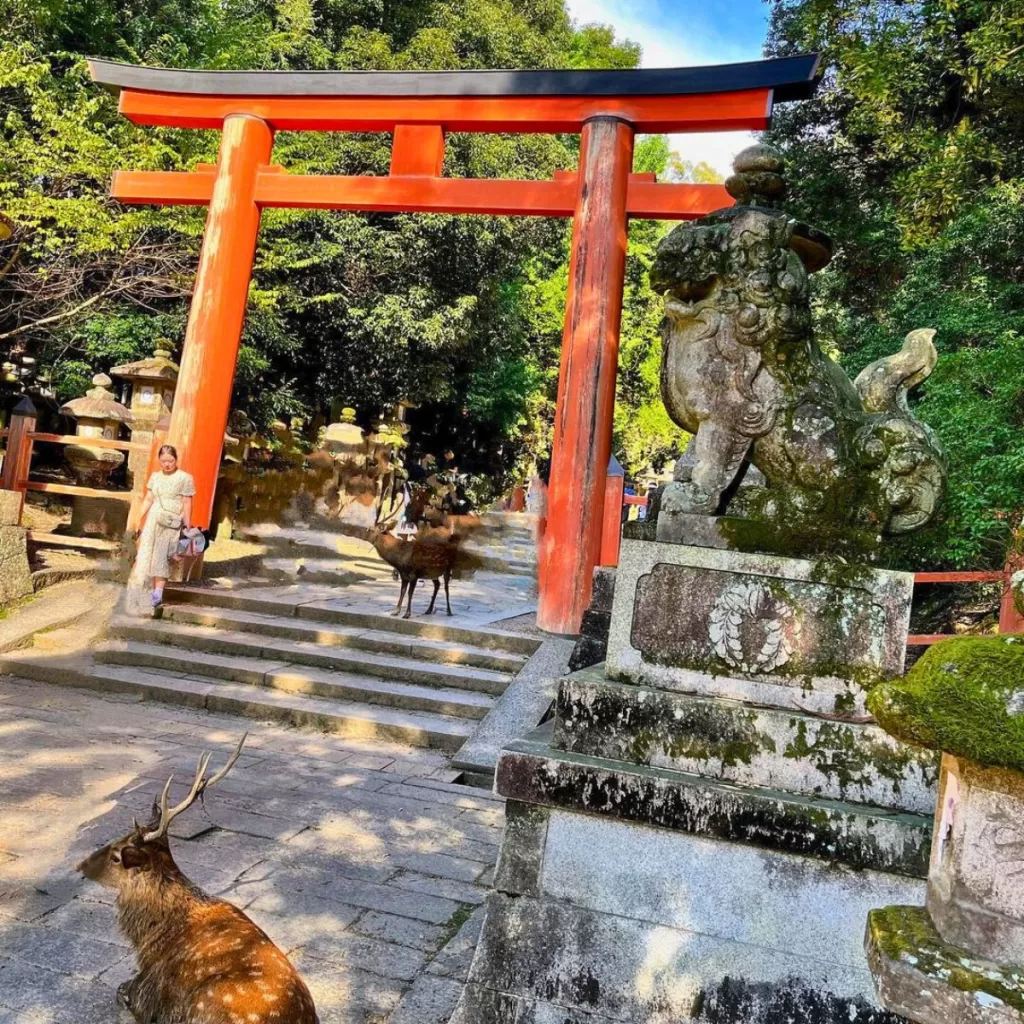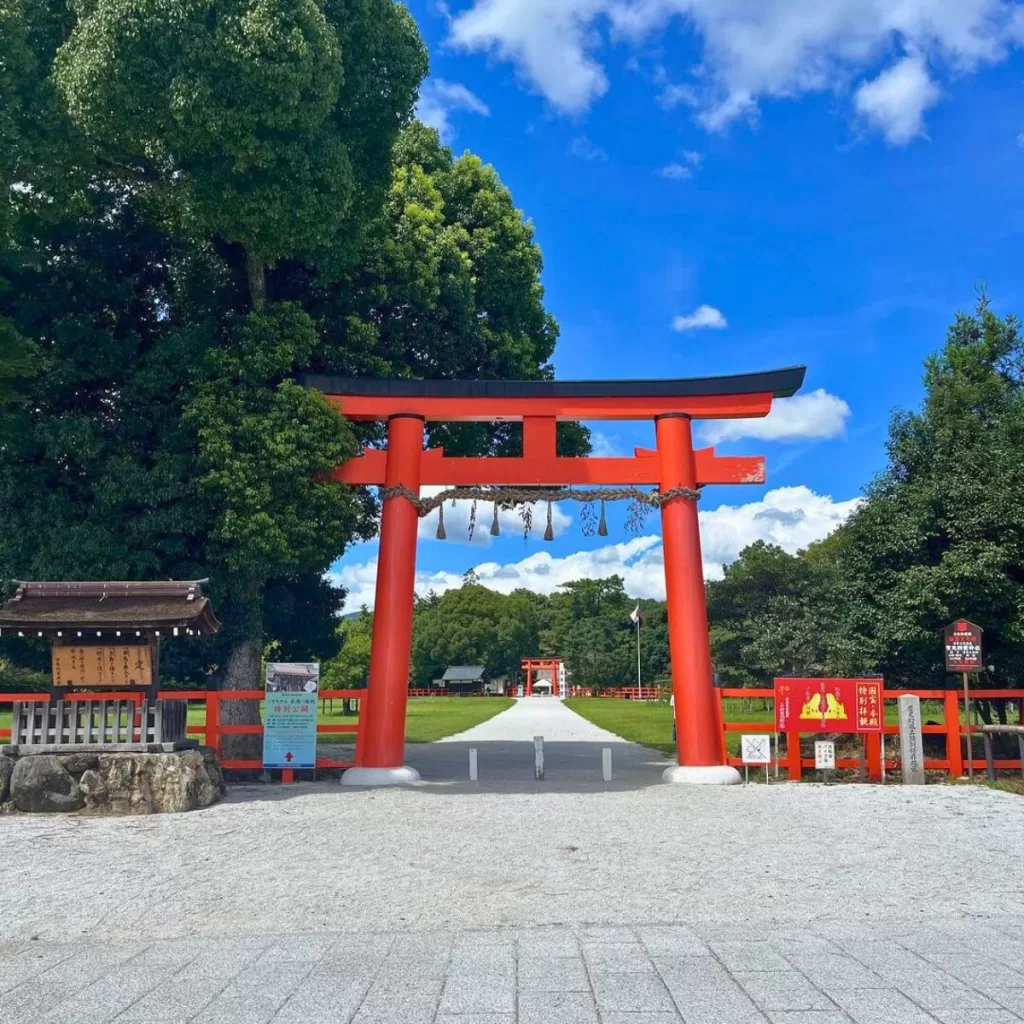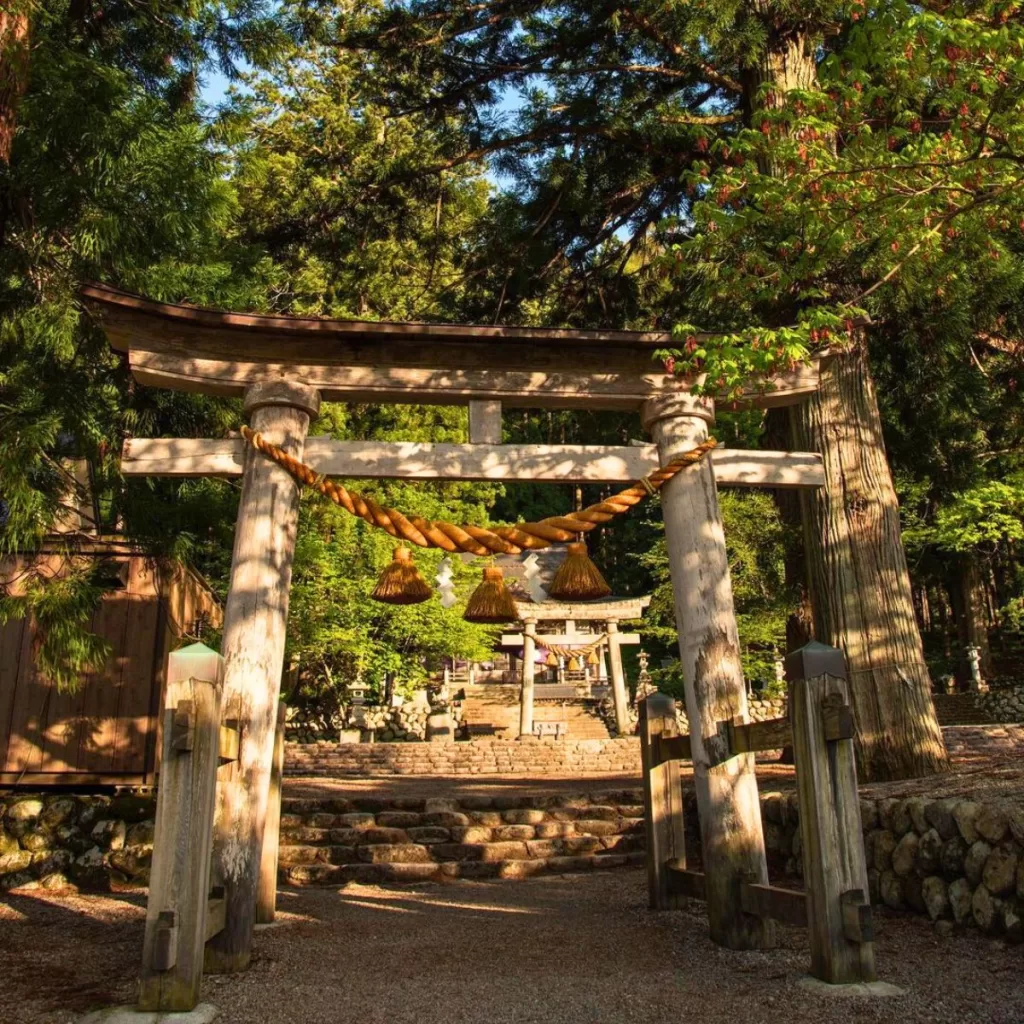15 Best Shinto Torii Gates to Visit in Japan
The Torii Gate is a ubiquitous part of Japanese culture, present at any Shinto shrine you visit in Japan. The fundamental structure draws deep-rooted historical significance from the Shinto religion. It lies at a beautiful intersection of Japan’s traditional culture and the awe-inspiring aesthetics that drive tourists to explore Japan.
A torii gate stands as a symbol delineating the line between the physical and spiritual realms. These iconic Japanese structures, often bright red, mark the entrance to sacred Shinto shrines across Japan. They come in different forms and sizes; some gates are painted vermillion, while others remain natural wooden torii gates. It’s also possible to find torii gates made from stone and metal.
Best Shinto Torii Gates in Japan
Beyond their architectural beauty, the concept behind these gates reflects essential elements of Japanese spirituality. They designate sacred spaces and symbolize purification, warding off evil spirits and ensuing blessings to those who pass through them.
Fushimi Inari Taisha (Kyoto)

Fushimi Inari Taisha in Kyoto is a captivating testament to Japan’s rich Shinto heritage. Its mesmerizing Torii gate pathway, stretching over 4 kilometers, invites visitors into a world where spirituality and natural beauty converge. As you wander through the vibrant vermillion gates, you’ll be immersed in tranquility and reverence.
This iconic shrine, dedicated to the Shinto god Inari, attracts millions of visitors yearly. The Torii gates, generously donated by individuals and businesses, create a breathtaking tunnel-like effect, guiding pilgrims along the sacred Mount Inari trail. Along the way, you’ll encounter stone fox statues, believed to be Inari’s messengers, and smaller shrines that offer moments of reflection and prayer.
The beauty of Fushimi Inari Taisha extends beyond its torii gates. The surrounding forest area adds an ethereal touch to the experience, especially during the early morning or late afternoon when sunlight filters through the trees. As you ascend the mountain, you’ll be rewarded with panoramic views of Kyoto city and a profound connection to Japan’s spiritual roots. Fushimi Inari Taisha is a must-visit destination where ancient traditions and natural splendor blend seamlessly into a truly unforgettable journey.
Itsukushima Shrine (Miyajima)

Nestled on the picturesque island of Miyajima, Itsukushima Shrine is a captivating masterpiece and one of Japan’s most iconic Shinto torii gates. Floating gracefully over the Seto Inland Sea, the vermilion torii gate is a gateway between the human and spiritual realms. At high tide, it appears floating on the water, creating a mesmerizing sight that has captivated visitors for centuries.
Itsukushima Shrine is not only known for its torii gate but also for its stunning architectural beauty. The shrine complex, designated as a UNESCO World Heritage Site, showcases traditional Japanese craftsmanship and design. Visitors can explore the hallowed halls, wander through the serene gardens, and witness captivating rituals performed for centuries.
Beyond its architectural splendor, Itsukushima Shrine offers a unique cultural experience. The island of Miyajima itself is a tranquil haven renowned for its sacred deer, lush forests, and charming streets lined with traditional shops and eateries. Visitors can witness the ethereal beauty of the torii gate at different times of the day, each offering a unique perspective on this enchanting symbol of Japanese spirituality.
Toshogu Shrine (Nikko)

Toshogu Shrine in Nikko is a true gem among Japan’s Shinto torii gates, renowned for its exquisite beauty and historical significance. The majestic torii gate at the entrance, adorned with intricate carvings and vibrant colors, sets the stage for an awe-inspiring journey into Japanese spirituality. As you pass through the gate, you’ll be greeted by a meticulously crafted complex of ornate buildings, including the iconic Yomeimon Gate, showcasing the finest examples of Japanese architectural artistry.
The grandeur of Toshogu Shrine extends beyond its torii gate, as it serves as the final resting place of Tokugawa Ieyasu, a prominent figure in Japanese history. The shrine complex is a masterpiece of craftsmanship, featuring elaborate wood carvings, gold leaf decorations, and vibrant paintings. Each structure within the shrine is a testament to the skill and dedication of the artisans who brought them to life.
Surrounded by the serene beauty of Nikko’s forested mountains, Toshogu Shrine offers a tranquil and spiritually uplifting experience. Visitors can explore the various sub-shrines, stroll through beautifully manicured gardens, and witness the rituals and ceremonies conducted for centuries. This revered site holds a special place in Japanese culture, attracting visitors worldwide who seek to immerse themselves in the country’s rich traditions and architecture.
Meiji Shrine (Tokyo)

Meiji Shrine, situated in the heart of Tokyo, is a revered destination that embodies the essence of Japanese spirituality. As you pass through the towering Torii gate, you enter a realm of tranquility and serenity, shielded from the bustling city. Dedicated to Emperor Meiji and Empress Shoken, the shrine is a testament to their enduring legacy. The expansive grounds, encompassing lush forests and serene gardens, invite contemplation and reflection.
Visitors can witness traditional Shinto rituals, such as wedding ceremonies and purification rites while immersing themselves in the peaceful ambiance. Meiji Shrine’s torii gate is a gateway to a sacred realm where tradition, nature, and reverence intertwine.
Kasuga Taisha (Nara)

Kasuga Taisha, nestled in the ancient city of Nara, is a captivating testament to Japan’s rich cultural heritage. Its torii gates, numbering in the hundreds, guide visitors through a mystical forest pathway, creating an enchanting atmosphere. The shrine, dedicated to multiple Shinto deities, exudes a sense of profound reverence and tranquility.
The vermilion-colored gates, adorned with sacred symbols, represent a symbolic passage into the spiritual realm. As you explore the shrine complex and its surrounding park, you’ll encounter stone lanterns, moss-covered stone paths, and serene ponds, adding to the ethereal beauty of the experience. Kasuga Taisha’s torii gates offer an immersive journey into Japan’s ancient traditions and a profound connection to the sacred.
Nezu Shrine (Tokyo)

Nezu Shrine, nestled in the historic neighborhood of Tokyo, is a hidden gem that captivates visitors with its serene beauty. Its torii gates, enveloped by lush greenery, create a mesmerizing pathway through the shrine grounds. As you pass through the gates, you enter a tranquil world of spirituality and tradition. The shrine’s vibrant vermilion structures, adorned with intricate carvings, exude a timeless charm.
Nezu Shrine is especially renowned for its picturesque azalea garden, which bursts into a riot of colors during spring. With its harmonious blend of nature and spirituality, Nezu Shrine’s torii gates offer a captivating and memorable experience.
Hakone Shrine (Hakone)

Hakone Shrine, nestled amidst the breathtaking scenery of Hakone, is a true gem among Japan’s Shinto torii gates. Its torii gate, standing gracefully in the tranquil waters of Lake Ashi, creates a mesmerizing sight that is often shrouded in mist, adding an air of mystique. You’ll be transported to a world of serenity and reverence as you approach the gate by boat or on foot.
The shrine complex, surrounded by lush forested mountains, offers a respite from the bustling city. With its harmonious blend of natural beauty and spiritual significance, Hakone Shrine’s torii gate is a captivating destination for any traveler seeking tranquility and connection with Japanese culture.
Kamigamo Shrine (Kyoto)

Kamigamo Shrine, nestled in the scenic city of Kyoto, is a hidden treasure that showcases the timeless beauty of Japanese Shinto architecture. Its torii gate, gracefully standing at the entrance, welcomes visitors to a realm of sacred tranquility. The shrine’s torii gates, lining the pathway through the enchanting forest, create a captivating atmosphere that resonates with spirituality.
As you explore the shrine grounds, you’ll encounter meticulously maintained gardens, ancient sacred trees, and elegant structures that evoke a sense of reverence. Kamigamo Shrine’s torii gates offer a glimpse into the rich cultural heritage of Japan and provide a serene escape from the modern world.
Izumo Taisha (Shimane)

Izumo Taisha, located in the picturesque Shimane prefecture, is a revered shrine steeped in myth and legend. Its torii gate, towering with grandeur, beckons visitors into a realm of ancient spirituality. Known as the “Home of the Gods,” Izumo Taisha is a sacred place where deities gather for their annual meeting. The shrine’s torii gate, surrounded by tranquil forested grounds, exudes a sense of awe and reverence.
As you pass through the gate, you enter a world where tradition and mythology intertwine, offering a profound connection to Japan’s spiritual roots. Izumo Taisha’s Torii gate is a gateway to a realm of divine energy and cultural significance.
Shirakawa Hachiman Shinto Shrine

Shirakawa Hachiman Shinto Shrine, located in the historic city of Shirakawa, is a captivating destination that transports visitors to the heart of Japanese spirituality. Its torii gate, gracefully standing at the entrance, commands attention with its majestic presence. The shrine’s torii gate, adorned with traditional motifs and vibrant colors, serves as a gateway to a realm of reverence and tradition.
As you pass through the gate, you are enveloped by a serene atmosphere where ancient rituals and natural beauty converge. Shirakawa Hachiman Shinto Shrine’s torii gate offers a glimpse into the rich cultural heritage of Japan, inviting all to experience the profound spirituality and architectural splendor it holds.
Motonosumi Inari Shrine (Yamaguchi)

Motonosumi Inari Shrine, nestled along the scenic coastline of Yamaguchi, is a hidden gem that captivates visitors with its striking beauty. Its torii gates, numbering over a hundred, form a vibrant pathway that stretches towards the azure sea. Each gate, meticulously crafted and painted in vibrant vermillion, creates a mesmerizing visual spectacle.
As you traverse the pathway, the gates lead you on a journey of spiritual significance and breathtaking views. Motonosumi Inari Shrine’s torii gates offer a unique and awe-inspiring experience, where the harmony of nature, tradition, and reverence converge to create a truly unforgettable visit for all who venture there.
Kumano Hayatama Taisha (Wakayama)

Kumano Hayatama Taisha, nestled in the scenic Wakayama prefecture, is a revered shrine that is a testament to Japan’s spiritual heritage. Its torii gate, gracefully perched at the mouth of the Kumano River, welcomes pilgrims and visitors alike to embark on a sacred journey. The shrine’s torii gate, weathered by time, adds an air of mystique to the surrounding landscape.
As you pass through the gate, you enter a realm of tranquility and reverence, where ancient rituals and natural beauty intertwine. Kumano Hayatama Taisha’s torii gate offers a gateway to a spiritual sanctuary, inviting all to seek solace and connection in its hallowed grounds.
Hie Shrine (Tokyo)

Hie Shrine, nestled in the vibrant city of Tokyo, is a hidden gem that embodies the essence of Japanese spirituality. Standing proudly at the entrance, its torii gate invites visitors into a world of tradition and serenity. The shrine’s torii gate, adorned with vibrant vermillion color, creates a striking contrast against the urban backdrop.
As you pass through the gate, you enter a realm of tranquility where ancient rituals and reverence harmonize. Hie Shrine’s torii gate serves as a symbolic threshold, offering a respite from the bustling city and a connection to the rich cultural heritage of Japan.
Takayama Inari Shrine (Gifu)

Takayama Inari Shrine, nestled in the picturesque town of Takayama, Gifu prefecture, is a captivating destination showcasing Japanese spirituality’s allure. Its torii gate, standing gracefully amidst the lush greenery, beckons visitors into a world of enchantment. The shrine’s torii gate, adorned with intricate carvings and vibrant colors, creates a captivating sight that evokes a sense of awe.
As you pass through the gate, you enter a realm of tranquility and reverence, where ancient traditions and natural beauty intertwine. Takayama Inari Shrine’s torii gate offers a gateway to a sacred sanctuary, inviting all to experience the profound depths of Japanese culture and spirituality.
Munakata Taisha – Fukuoka

Munakata Taisha, nestled in the serene coastal region of Fukuoka, is a revered shrine with deep spiritual significance. Its majestically standing at the entrance, its torii gate welcomes visitors to a realm where tradition and nature harmonize. The shrine’s torii gate, adorned with intricate details and vibrant hues, serves as a symbolic gateway to the sacred grounds.
You immerse yourself in tranquility and reverence as you pass through the gate. Munakata Taisha’s torii gate is a testament to the enduring cultural heritage of Japan, inviting all to experience the shrine’s profound spirituality and natural beauty.